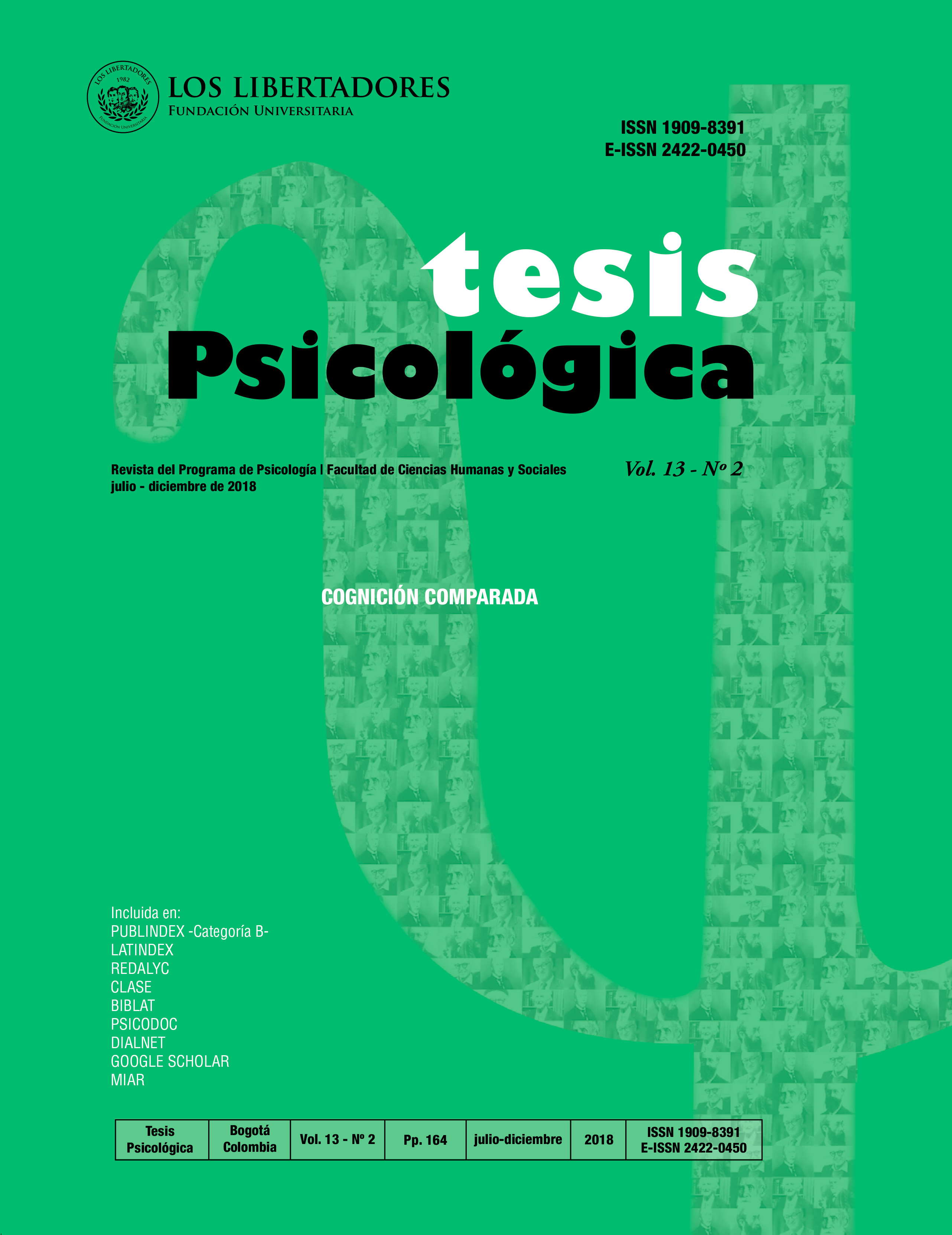Resumen
La permanencia de los objetos, la capacidad de representar objetos ocultos, no se ha evaluado ampliamente en los cetáceos y la evidencia disponible es contradictoria. Aunque se cree que los delfines nariz de botella (Tursiops truncatus) están dotados de las capacidades cognitivas necesarias para aprobar pruebas complejas de permanencia de objetos, han fallado en una serie de tareas que involucran desplazamientos invisibles, lo que plantea la cuestión de si logran la permanencia de los objetos maestros. La falta de comprensión de la contención o la falta de experiencia en el seguimiento de objetos ocultos tanto de la vista como de la ecolocación pueden explicar estos resultados inesperados. El objetivo del presente estudio fue probar estas dos hipótesis en una serie de tareas de desplazamiento visibles e invisibles con delfines nariz de botella. Nuestros resultados sugieren que los delfines pueden tener éxito en tareas complejas de permanencia de objetos, pero solo si tienen experiencia visual previa con los movimientos de objetos dentro de otros objetos. Por lo tanto, estos resultados apuntan a un papel importante de la experiencia visual en el desarrollo de habilidades de permanencia de objetos.
Referencias
Baillargeon R, Renée (1987) Object permanence in 3½- and 4½-month-old infants. Dev Psychol 23:655–664 . doi: 10.1037/0012-1649.23.5.655
Baillargeon R, Spelke ES, Wasserman S (1985) Object permanence in five-month-old infants. Cognition 20:191–208 . doi: 10.1016/0010-0277(85)90008-3
Barth J, Call J (2006) Tracking the displacement of objects: a series of tasks with great apes (Pan troglodytes, Pan paniscus, Gorilla gorilla, and Pongo pygmaeus) and young children (Homo sapiens). J Exp Psychol Anim Behav Process 32:239–252 . doi: 10.1037/0097-7403.32.3.239
Beran MJ, Minahan MF (2000) Monitoring Spatial Transpositions by Bonobos (Pan paniscus) and Chimpanzees (P. troglodytes). Int J Comp Psychol 13:1
Blois-Heulin C, Crével M, Böye M, Lemasson A (2012) Visual laterality in dolphins: importance of the familiarity of stimuli. BMC Neurosci 13:9 . doi: 10.1186/1471-2202-13-9
Bremner JG, Slater AM, Johnson SP (2015) Perception of Object Persistence: The Origins of Object Permanence in Infancy. Child Dev Perspect 9:7–13 . doi: 10.1111/cdep.12098
Cacchione T, Rakoczy H (2017) Comparative methaphysiscs: Thinking about objects in space and time. In: Call J (ed) Handbook of Comparative Psychology. American Psychological Association, Washington, pp 579–599
Call J (2003) Spatial rotations and transpositions in orangutans (Pongo pygmaeus) and chimpanzees (Pan troglodytes). Primates 44:347–357 . doi: 10.1007/s10329-003-0048-6
Hespos SJ, Baillargeon R (2001) Infants’ Knowledge About Occlusion and Containment
18
Tesis Psicológica vol. 13- nº2 julio-diciembre/18 pp. 1-19 ISSN 1909-8391
Events: A Surprising Discrepancy. Psychol Sci 12:141–147 . doi: 10.1111/1467-9280.00324
Hespos SJ, Baillargeon R (2006) D??calage in infants’ knowledge about occlusion and containment events: Converging evidence from action tasks. Cognition 99: . doi: 10.1016/j.cognition.2005.01.010
Jaakkola K (2014) Do Animals Understand Invisible Displacement? A Critical Review. J Comp Psychol 128:1–15 . doi: 10.1037/a0035675
Jaakkola K, Guarino E, Rodriguez M, et al (2010) What do dolphins (Tursiops truncatus) understand about hidden objects? Anim Cogn 13:103–120 . doi: 10.1007/s10071-009-0250-z
Johnson CM, Sullivan J, Buck CL, et al (2015) Visible and invisible displacement with dynamic visual occlusion in bottlenose dolphins (Tursiops spp). Anim Cogn 18:179–193 . doi: 10.1007/s10071-014-0788-2
Johnson SP, Amso D, Slemmer JA (2003) Development of object concepts in infancy: Evidence for early learning in an eye-tracking paradigm. Proc Natl Acad Sci U S A 100:10568–10573 . doi: 10.1073/pnas.1630655100
Marino L, Connor RC, Fordyce RE, et al (2007) Cetaceans Have Complex Brains for Complex Cognition. PLoS Biol 5:e139 . doi: 10.1371/journal.pbio.0050139
Mercado III E, DeLong CM (2010) Dolphin Cognition : Representations and Processes in Memory and Perception. Int J Comp Psychol 23:344–378
Piaget J (1953) The origins of intelligence in children. J Consult Psychol 17:467–467 . doi: 10.1037/h0051916
Piaget J (1954) The construction of reality in the child (Trans. Cook)
Prasad A (2015) Development of object permanence in a newborn visual system :: University of Southern California Dissertations and Theses. University of Southern California
Rooijakkers EF, Kaminski J, Call J (2009) Comparing dogs and great apes in their ability to
19
Tesis Psicológica vol. 13- nº2 julio-diciembre/18 pp. 1-19 ISSN 1909-8391
visually track object transpositions. Anim Cogn 12:789–96 . doi: 10.1007/s10071-009-0238-8
Spelke ES, Breinlinger K, Macomber J, Jacobson K (1992) Origins of knowledge. Psychol Rev 99:605–32


